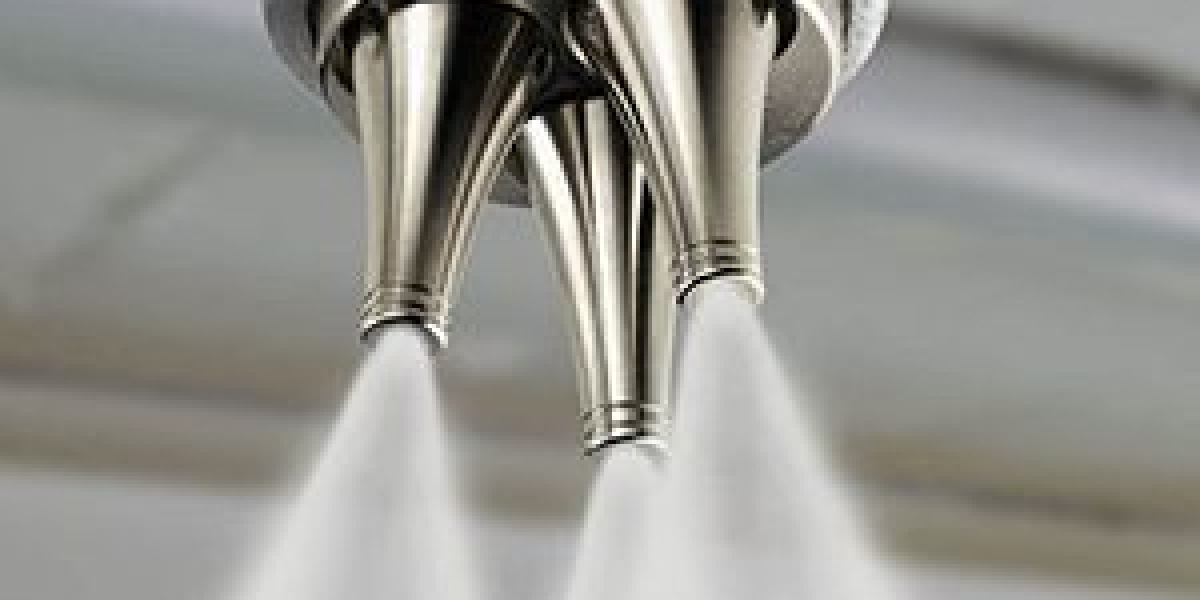Fire safety is a critical concern in Dubai, a city known for its impressive skyline and rapid urbanization. With a mix of residential, commercial, and industrial buildings, having effective fire fighting systems in place is essential to protect lives and property from potential fire hazards. Fire fighting systems are designed to prevent, detect, and extinguish fires, and they consist of various components that work together to ensure comprehensive fire safety. This article will explore the key components of fire fighting system dubai, emphasizing their importance and functionality.

1. Fire Alarm Systems
Overview
Fire alarm systems are the first line of defense against fire hazards. They are designed to detect smoke, heat, or flames and alert occupants to evacuate the premises.
Key Features
Smoke Detectors: These devices sense smoke particles in the air. They can be ionization detectors, which are more responsive to fast-burning fires, or photoelectric detectors, which are better for smoldering fires.
Heat Detectors: These devices activate when the temperature rises above a predetermined level, providing an additional layer of detection.
Manual Call Points: Also known as pull stations, these allow occupants to manually trigger the alarm in case of a fire.
Control Panel: The central hub of the fire alarm system that receives signals from detectors and initiates alerts. It can also provide detailed information about the location and nature of the fire.
Importance
Fire alarm systems are crucial for early fire detection, allowing occupants to evacuate quickly and reducing the risk of injury and property damage.
2. Fire Suppression Systems
Overview
Fire suppression systems are designed to control or extinguish fires. They can be classified into various types, depending on their mechanism of action and application.
Key Types
Sprinkler Systems: Automatic systems that release water when a fire is detected. They can be wet pipe systems, dry pipe systems, or pre-action systems, each suitable for different building types and hazards.
Fire Extinguishers: Portable devices containing various extinguishing agents (water, foam, dry chemical, CO2) to combat small fires. Different types of extinguishers are suitable for different classes of fires (A, B, C, etc.).
Foam Systems: Used in high-risk areas such as fuel storage and aircraft hangars, foam systems suppress fires by creating a blanket over flammable liquids, cutting off oxygen.
Gas Suppression Systems: These systems use gases like FM-200 or CO2 to extinguish fires, particularly in areas with sensitive equipment like data centers or server rooms.
Importance
Fire suppression systems are vital for controlling and extinguishing fires quickly, preventing them from spreading and causing more significant damage.
3. Fire Hydrants and Standpipes
Overview
Fire hydrants and standpipes are essential components for providing water supply during a fire emergency.
Key Features
Fire Hydrants: Located outside buildings, these are connected to the municipal water supply and provide firefighters with immediate access to water during emergencies.
Standpipe Systems: Installed within buildings, standpipes are vertical pipes that provide water for firefighting. They are typically equipped with hose connections on each floor, allowing firefighters to quickly connect hoses and access water.
Importance
Hydrants and standpipes are crucial for ensuring a reliable water supply during firefighting operations, enabling firefighters to respond swiftly and effectively to fire incidents.
4. Fire Doors and Barriers
Overview
Fire doors and barriers play a crucial role in preventing the spread of fire and smoke within a building.
Key Features
Fire Doors: These are specially designed doors made from fire-resistant materials, capable of withstanding fire for a specified period. They automatically close to contain fires in a particular area, protecting escape routes and other parts of the building.
Smoke Barriers: These are structures or walls designed to prevent smoke from spreading during a fire, facilitating safe evacuation routes.
Importance
Fire doors and barriers are essential for enhancing occupant safety by confining fires to specific areas, allowing more time for evacuation and reducing smoke inhalation risks.
5. Emergency Lighting and Signage
Overview
Emergency lighting and signage are vital for ensuring safe evacuation during a fire or other emergencies.
Key Features
Emergency Lighting: These lights illuminate escape routes and exits during power outages or when normal lighting fails, guiding occupants to safety.
Exit Signs: Clearly marked exit signs indicate the nearest evacuation routes, facilitating quick and efficient evacuations.
Importance
Proper emergency lighting and signage are critical for helping occupants navigate to safety in low visibility conditions, ensuring a smooth evacuation process.
6. Fire Safety Equipment
Overview
In addition to the primary fire fighting systems, various fire safety equipment is essential for enhancing overall fire safety.
Key Types
Fire Blankets: These are portable blankets made from fire-resistant materials used to smother small fires or protect individuals from flames.
Personal Protective Equipment (PPE): Gear such as helmets, gloves, and fire-retardant clothing worn by firefighters and safety personnel to protect against heat and flames.
Importance
Having adequate fire safety equipment on-site is essential for managing fire incidents effectively and protecting both occupants and first responders.
7. Fire Safety Management Systems
Overview
Fire safety management systems encompass policies and procedures designed to enhance fire safety in buildings.
Key Components
Fire Safety Plans: These include detailed evacuation procedures, roles and responsibilities during emergencies, and contact information for fire safety personnel.
Regular Drills and Training: Conducting fire drills and training sessions to ensure all occupants are familiar with emergency procedures and evacuation routes.
Importance
Effective fire safety management systems foster a culture of safety, ensuring that all occupants are prepared for emergencies and understand their roles during a fire incident.
Conclusion
In a bustling city like Dubai, where high-rise buildings and dense populations are common, fire fighting systems play a crucial role in ensuring the safety of residents, workers, and visitors. The key components of these systems—fire alarm systems, fire suppression systems, hydrants and standpipes, fire doors and barriers, emergency lighting, fire safety equipment, and fire safety management systems—work in concert to detect, suppress, and manage fire incidents effectively. As Dubai continues to grow and evolve, investing in robust fire fighting systems will remain essential for maintaining safety and compliance with local regulations. Prioritizing fire safety not only protects lives and property but also reinforces the city’s commitment to a secure and resilient urban environment.









